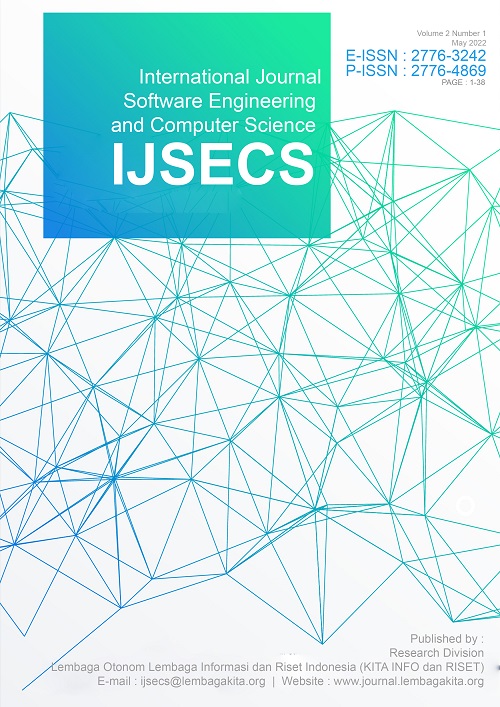Issue Description
International Journal Software Engineering and Computer Science (IJSECS), Vol. 2 No. 1 (May 2022), expands technical boundaries with advanced software architectures and specialized application domains. The volume introduces sophisticated development frameworks while addressing diverse computational challenges across academic, healthcare, and government sectors. Digital library systems receive modern treatment through Retrofit-Kotlin service architectures, creating scalable repositories for academic institutions. These platforms demonstrate contemporary API design patterns and data management strategies essential for large-scale educational resource sharing. Event management platforms evolve beyond basic scheduling, incorporating webinar hosting capabilities and integrated survey mechanisms that support remote learning and professional development activities. Mobile application development takes center stage with Android-based translation systems targeting regional dialects, specifically Indonesian to Nyow (Pepadun) language conversion. The technical implementation showcases natural language processing techniques adapted for indigenous language preservation and cultural heritage documentation. Medical diagnostic systems advance through expert system implementations utilizing Dempster-Shafer methodology for tuberculosis detection. The artificial intelligence approach demonstrates probabilistic reasoning frameworks applied to healthcare diagnostics, offering automated decision support for medical professionals in resource-limited settings. Government financial management receives attention through village fund allocation systems, addressing transparency and accountability requirements in local government operations. The platform designs emphasize audit trails and reporting mechanisms essential for public fund management. The technical diversity spans mobile development, web services, artificial intelligence, and government systems, reflecting the journal's commitment to practical software solutions across multiple domains. Each implementation demonstrates current development practices while solving real organizational challenges.




